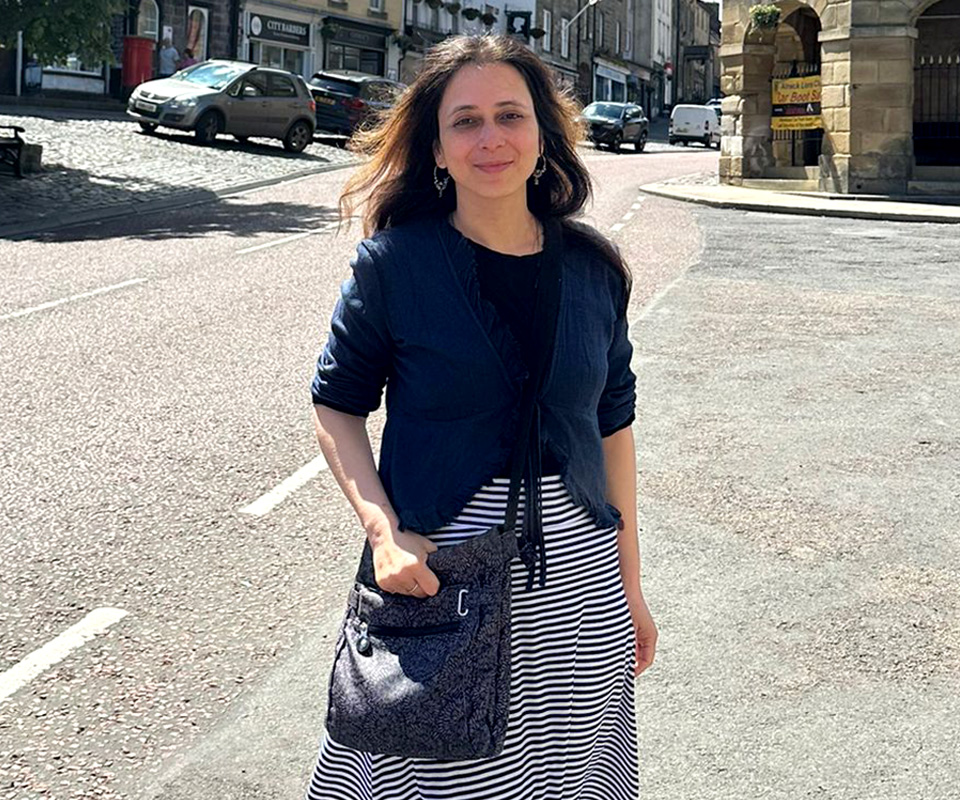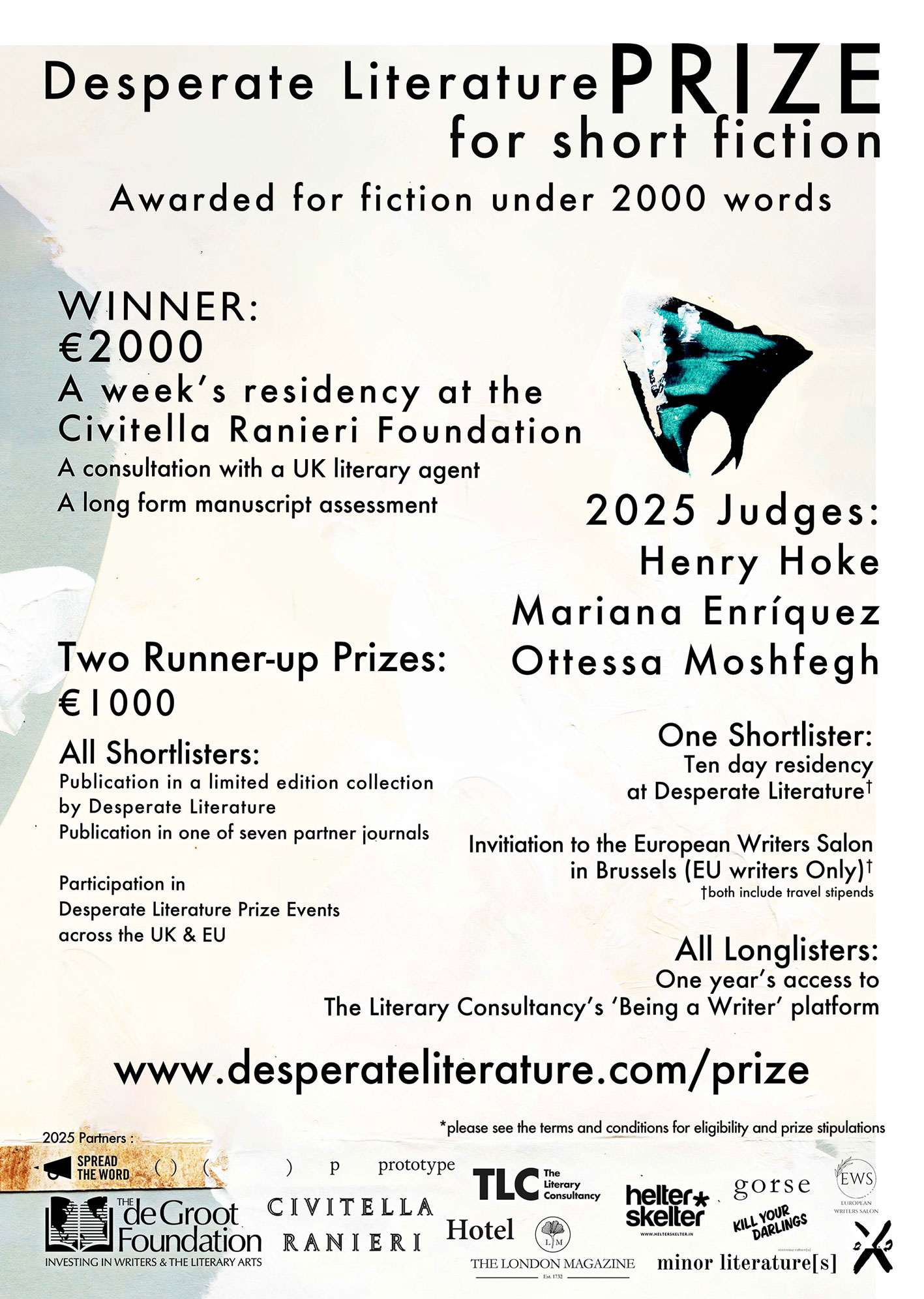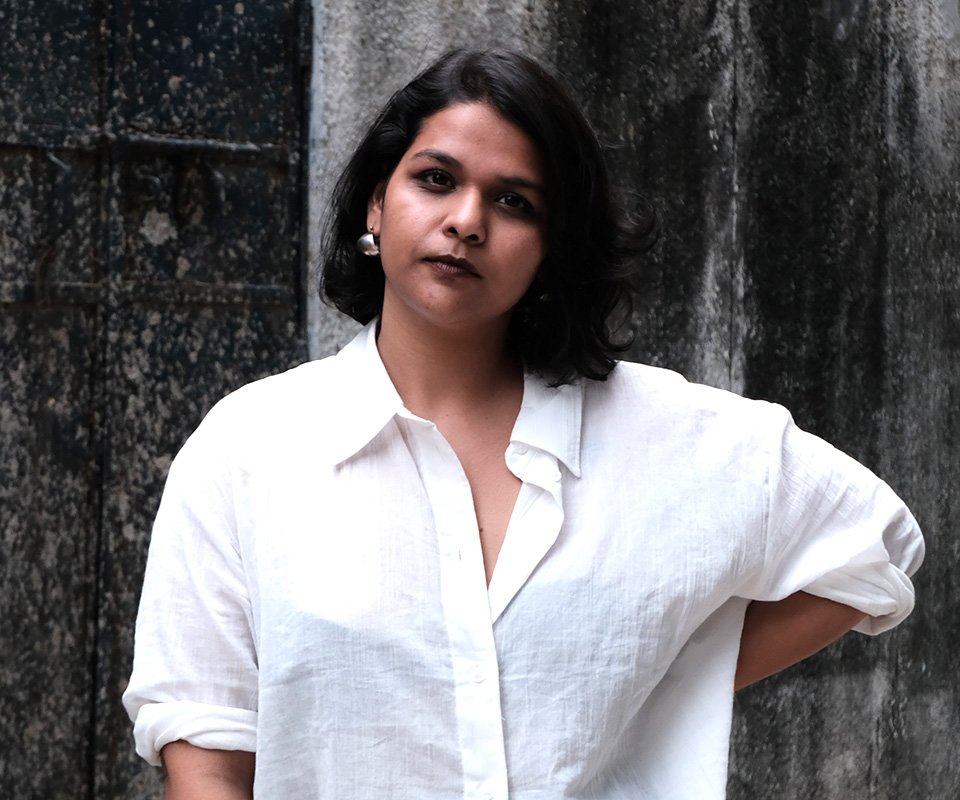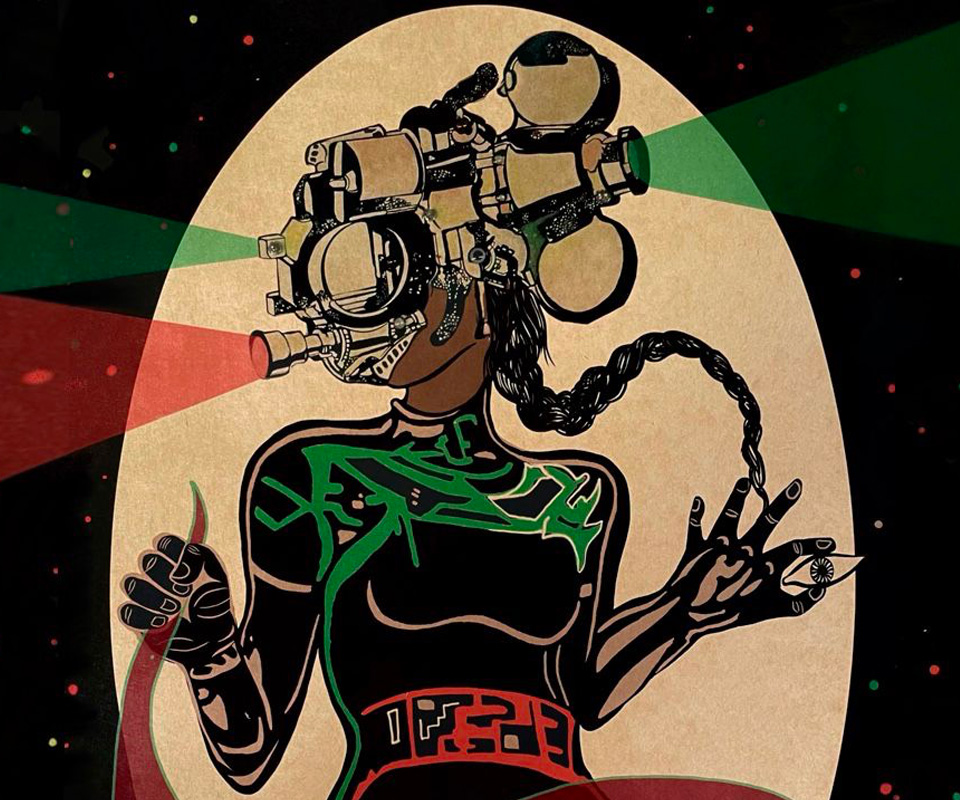Art in Conflict, Conflict in Art
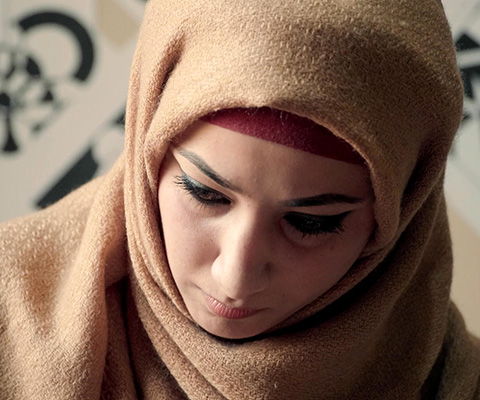
“When you paint burning chinar leaves and the smoke, it gives a very beautiful effect. Especially in water colours,” says painter and teacher Masood Hussain in Raqs-e-Inquilab (Art in a Time of Conflict).
It is a striking and yet wistful moment that powerfully encapsulates the film’s central theme---the coming together of art and strife, of the beautiful and the bleak, of the created with the real, of life with death. Hussain, along with Syed Mujtaba Rizvi, Hina Arif and Zeeshan Jaipuri, are the four Kashmiri artists featured in this short documentary by Niyantha Shekar and Mukti Krishan, which premiered at the South Asian Short Film Festival in Kolkata earlier this year. While Hussain belongs to a generation which remembers a time when beauty and peace still prevailed in the region, the younger artists recall moments of early personal trauma. Their accounts call attention not only to the sheer impact of the crisis raging in the land since the 1990s, but also to how it has shaped their lives and ways of thinking. They discuss the power of the visual imagery all around them and how it has seeped into their work, of documenting a history that has categorically been silenced, and of art’s ability to both revolt as well as to heal and hold out hope. In conversation with Helter Skelter, the makers of the film spoke about the role of art in a time and place of crisis and about the one-sided narratives of hate and fear about the region and its people spread by the media, about creative freedom and censorship, and whether, like the artworks featured in the film, their own work, especially in the context of the recent abrogation of Article 370, could be viewed as an expression of protest.
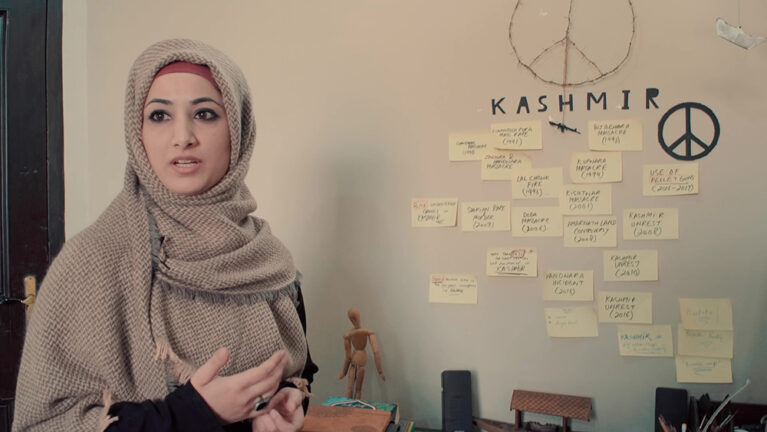 What sparked the idea for the film and how did it develop?Niyantha Shekar: A couple of years ago, Mukti and I were looking to collaborate together on an independent documentary, when we came across an article about Hina Arif, a Kashmiri artist who drew and shared (on Instagram) images of victims of the conflict. She was vocal, through her art and through her social media posts, about the human rights violations in Kashmir. We got in touch with her with the intention of making a short profile documentary on her. But as we met more artists in Kashmir, we realised that we could make a longer documentary that incorporated multiple voices on what it means to make art in the world’s most militarised region. Out of the four artists we see in the film, three work in the visual space. How did you get acquainted with the artists whose stories feature in the film? What were the reasons behind choosing these particular stories and what kind of a narrative did you want to weave around them?Niyantha Shekar: We messaged Hina on Instagram and expressed our interest in filming her art and her story. Once we met in person and she was comfortable with our process, she agreed to come on board. A friend of Mukti’s then helped us get in touch with artist and curator Mujtaba Rizvi and he subsequently connected us to many other artists. Journalist Athar Parvaiz and photographer Azaan Shah (who is also one of the cinematographers of Raqs-e-Inquilab) also helped us a lot with contacts. Over the course of our three trips (about a month each) to film this documentary, we met and filmed with a number of artists across the fields of visual arts, poetry, music, and photography. The narrative was constantly evolving and by the end of the shoot we were unsure what story we were going to tell. It was only when we got to the edit stage that we started to find links between the stories of our characters. We recognised a theme of premature loss of innocence with Hina, Mujtaba and Zeeshan. All three are children of the conflict and their art undeniably speaks to that. Masood Hussain, on the other hand, grew up in a time when Kashmir was relatively peaceful and his art reflects that: from his early idyllic images of rural Kashmir to his later digital art that protests the use of pellet guns by the Indian Army. We found this contrast of Masood Hussain and the younger artists interesting. But more than anything else, we were inspired by their courage to resist in their own unique ways, and use the power of art to help deal with the trauma of living in a conflict zone. 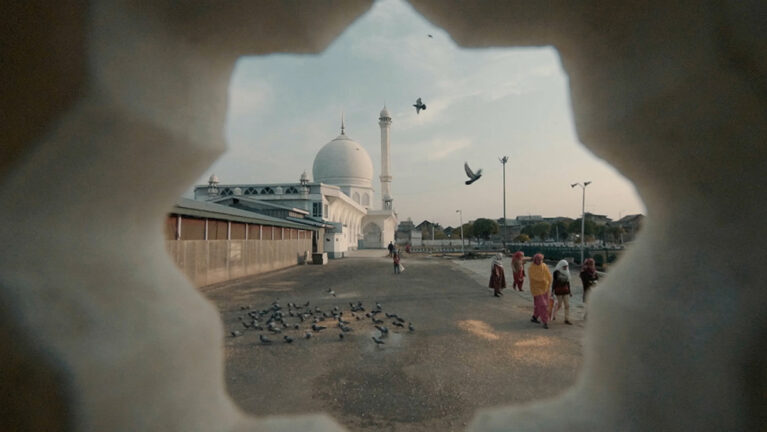 Mukti Krishan: I come from a family where the men in uniform were to be revered and not feared. My father is an ex-Navy officer and most of my uncles and aunts are currently serving either in the Air Force or the Army. Much of the focus on Kashmir in popular media has either been on mainstream politics or militancy-related violence. We have always seen the ‘benign’ and ‘humane’ face of the Army and other security agencies against the demonisation of the militants, secessionists, and even ordinary protestors. Human-rights abuses and excesses by the forces were either completely blacked out or mentioned only in passing. Bone-chilling stories of militants leaving people dead with beheaded bodies or torture cases involving the slitting of ears and the chopping off of noses were regularly carried in the media, but never of similar, and sometimes worse, atrocities by security agencies. I grew up believing the forces could never do any wrong---it was so black and white. Few years ago, I discovered director Ashvin Kumar’s documentary Inshallah, Kashmir, which opened my mind to the human face of militancy and the plight of the average Kashmiri living under fear and institutionalised oppression. I visited Kashmir for the first time for the filming of Raqs and the first thing I noticed as we left the airport was the overwhelming presence of the military in the city. The sight of an armed soldier staring at you, right outside your hotel/ guest house, first thing in the morning, is not pleasant. It is often even intimidating. There was always a sense of tension in the atmosphere. I cannot imagine what it must be like to live like this every day. 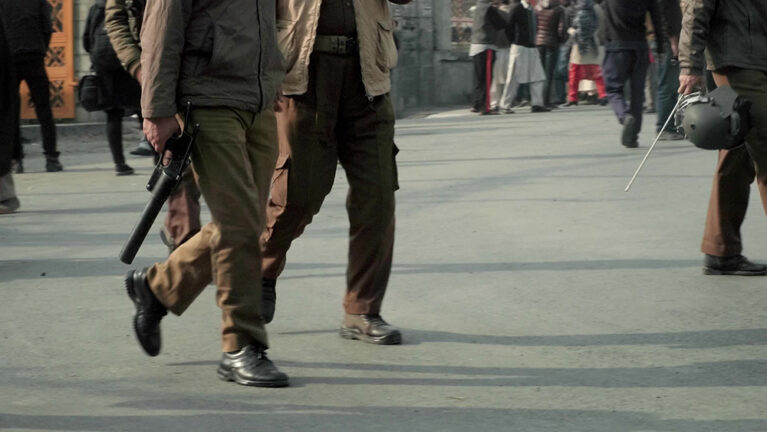 While hope and healing are the outcomes these artists speak about and look forward to achieving through their work, I've wondering, given the political climate, about how much space and opportunity there actually is for them to exhibit that art, to make it visible and accessible to others who may feel empowered and supported by it.Niyantha Shekar: There have been numerous internet shutdowns in Kashmir in recent years, and this only makes it harder to put out art that speaks truth to power. Hina Arif spoke to us about, and has addressed in her Instagram Live sessions, the trolling and opposition she faces for creating and sharing art that clearly communicates her point of view on Kashmir. A few years ago, an exhibition space called Gallerie One that Mujtaba ran got vandalised by tourism officials. But in spite of all this, they continue to find ways to use art to inform, resist, and bring people together. Mujtaba Rizvi has done work as an organiser to bring together artists through his Kashmir Art Quest initiative. Last year, he organised Concourse, an exhibition that brought together the work of 60 Kashmiri artists, including many from the estranged Pandit community. At the 2018 Kochi-Muziris Biennale, there was a 12-hour performance called the Srinagar Biennale within which Hina Arif did a performance piece on the nature of surveillance in Kashmir. How much creative freedom can these artists exercise when representing their reality in their art? Does censorship come into play?Niyantha Shekar: Censorship didn’t seem to come into play for the four artists we feature in the film, but we did realise through the filming of this documentary that creating art of this nature and dealing with the criticism that comes with it is demanding and stressful. One of the artists we met with during our research spoke to us about how the label of a resistance artist can be too much of a burden. Every piece of art they create is then viewed through that lens, and that can be overwhelming. How has the film been received so far? I know that it is now available on YouTube but are there any particular places where you would like to show it?Mukti Krishan: The response to the film has been largely positive and encouraging. Most people found the film educating and deeply moving. One of the comments we received was: “The film is all heart... offering a nuanced, sensitive perspective on Kashmir... I had tears in my eyes.” We have been getting inquiries about screening the film at various venues but nothing is confirmed yet. We are currently in the process of designing a customised distribution strategy based on our core audiences, the key avenues to reach them and potential partners. We would like the film to reach out to a wider audience.
Raqs-e-Inquilab is available on YouTube through Journeyman. Click here to watch the film.
